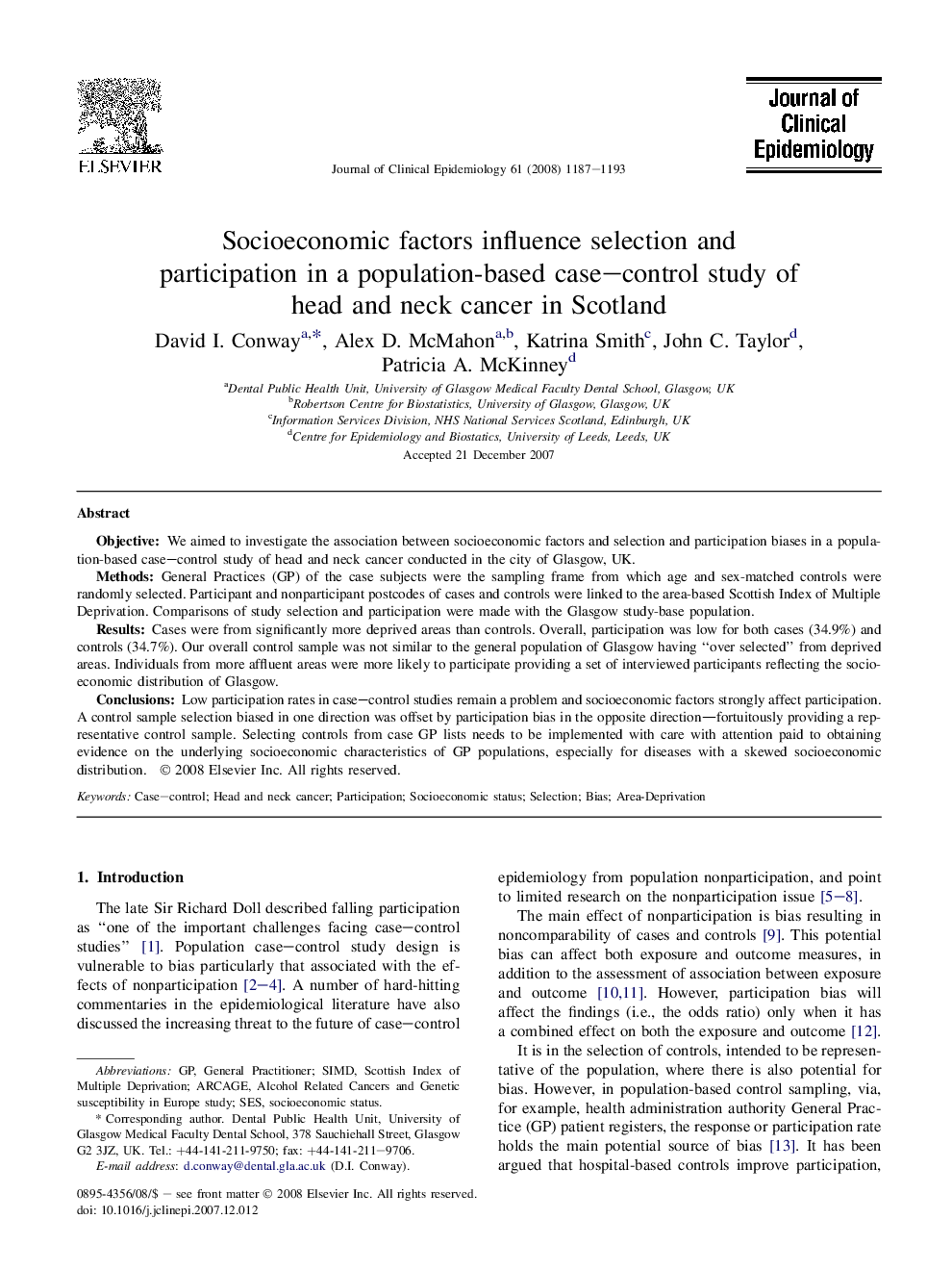| Article ID | Journal | Published Year | Pages | File Type |
|---|---|---|---|---|
| 1082765 | Journal of Clinical Epidemiology | 2008 | 7 Pages |
ObjectiveWe aimed to investigate the association between socioeconomic factors and selection and participation biases in a population-based case–control study of head and neck cancer conducted in the city of Glasgow, UK.MethodsGeneral Practices (GP) of the case subjects were the sampling frame from which age and sex-matched controls were randomly selected. Participant and nonparticipant postcodes of cases and controls were linked to the area-based Scottish Index of Multiple Deprivation. Comparisons of study selection and participation were made with the Glasgow study-base population.ResultsCases were from significantly more deprived areas than controls. Overall, participation was low for both cases (34.9%) and controls (34.7%). Our overall control sample was not similar to the general population of Glasgow having “over selected” from deprived areas. Individuals from more affluent areas were more likely to participate providing a set of interviewed participants reflecting the socioeconomic distribution of Glasgow.ConclusionsLow participation rates in case–control studies remain a problem and socioeconomic factors strongly affect participation. A control sample selection biased in one direction was offset by participation bias in the opposite direction—fortuitously providing a representative control sample. Selecting controls from case GP lists needs to be implemented with care with attention paid to obtaining evidence on the underlying socioeconomic characteristics of GP populations, especially for diseases with a skewed socioeconomic distribution.
